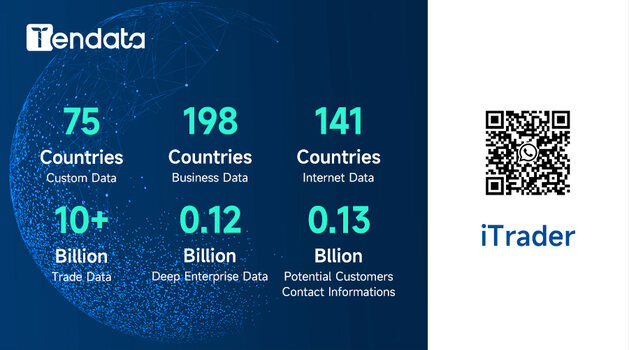 Export News
Export News
 2023-09-26
2023-09-26
As the global market for electronic equipment continues to thrive, exporters play a crucial role in facilitating the movement of goods across borders. In the United States, like in most countries, exporting electronic equipment involves a series of steps and the submission of essential documents to ensure compliance with regulations and a smooth transaction process. This article explores the necessary documentation that electronic equipment exporters need to navigate the intricacies of the US export process.
>>>Click to Request A Free Demo - Quick Find Potential Customers<<<

Understanding the Export Process
Before delving into the specific documents required, it's important to have a general understanding of the export process for electronic equipment:
· Product Classification: Properly classify your electronic equipment using the Harmonized System (HS) code. This code determines the applicable regulations, tariffs, and licensing requirements.
· Compliance Checks: Ensure that your products comply with all relevant regulations and standards, including those related to safety, electromagnetic compatibility, and environmental impact.
· Export License: Determine whether your electronic equipment requires an export license from the U.S. government. Some items, particularly those with potential dual-use applications, may require additional authorization.
· Shipping Arrangements: Arrange for shipping and transportation, considering factors like packaging, labeling, and mode of transport.
· Customs Declaration: Prepare the necessary customs declaration documents to be submitted to the relevant authorities.
· Documentation: Compile all required documents to facilitate the export process and ensure a seamless flow of goods.
Required Documents for Electronic Equipment Exporters
1. Commercial Invoice:
The commercial invoice serves as a bill for the goods and includes essential details such as product descriptions, quantities, values, and terms of sale.
2. Packing List:
This document itemizes the contents of each package and provides details about the packaging materials used.
3. Bill of Lading:
The bill of lading is a transportation document that provides evidence of the contract of carriage and receipt of goods by the shipping carrier.
4. Export License (if applicable):
Certain electronic equipment may require an export license from relevant government agencies. This license authorizes the export of goods with specified conditions.
5. Electronic Export Information (EEI):
For shipments valued over $2,500 or those requiring an export license, electronic filing of the EEI through the Automated Export System (AES) is mandatory.
6. Certificate of Origin:
This document indicates the country where the electronic equipment was manufactured. It's often required for customs clearance and may be used to determine eligibility for preferential tariff treatment.
7. Importer Security Filing (ISF):
For ocean shipments, electronic equipment exporters must file an ISF before the goods depart the foreign port.
8. Compliance Certificates:
Depending on the nature of the electronic equipment, you may need to provide certificates demonstrating compliance with safety, electromagnetic compatibility, and environmental regulations.
9. Bill of Landing Instructions:
Detailed instructions to the carrier on how to handle and ship the goods are included in this document.
10. Proforma Invoice:
Similar to a commercial invoice, a proforma invoice provides a preliminary quotation for the goods and serves as a basis for negotiation between the exporter and the importer.
Conclusion: Navigating the Documentation Landscape
Exporting electronic equipment to the United States requires meticulous attention to detail, especially concerning the required documentation. Ensuring that all necessary documents are accurately prepared and submitted in a timely manner is essential for a successful and compliant export process. Collaborating with customs experts and trade consultants can further simplify the documentation process, allowing electronic equipment exporters to focus on their core business activities while seamlessly navigating the world of international trade.
About Tendata
Tendata has 18 years of experience in foreign trade industry services, for the current import and export enterprises in the export dilemma, Tendata will be the first time to insight into the root causes of the problem, put forward new ideas for import and export, launch related services for import and export customers to create more value! Tendata is still continuously digging and developing data of new countries to meet the development needs of more customers. Help customers to expand the import and export map, complete the import and export domination! (>>> Click to Get A Free Demo Online)

Category
Leave Message for Demo Request or Questions


 T-info
T-info T-discovery
T-discovery

 My
Tendata
My
Tendata Market Analysis
Market Analysis Customer
Development
Customer
Development Competitor
Monitoring
Competitor
Monitoring Customer Relationship
Customer Relationship





































































































































